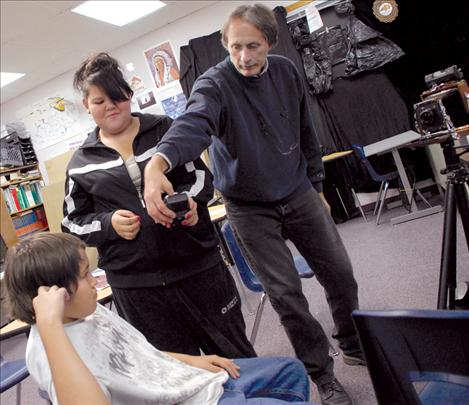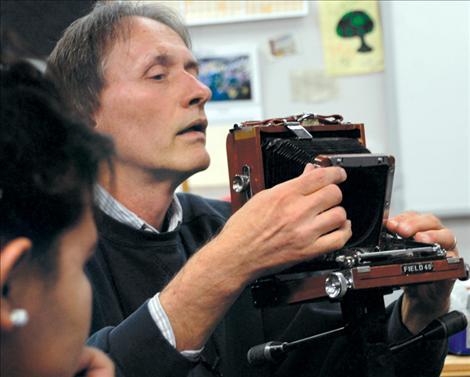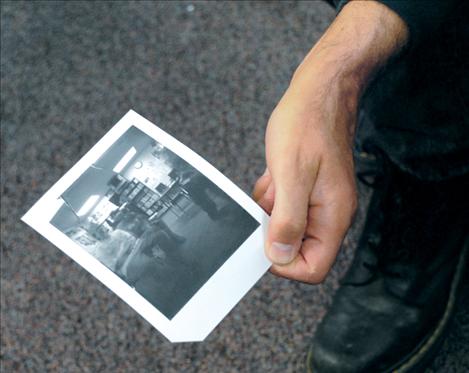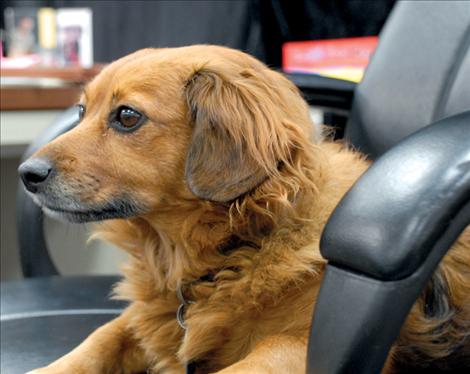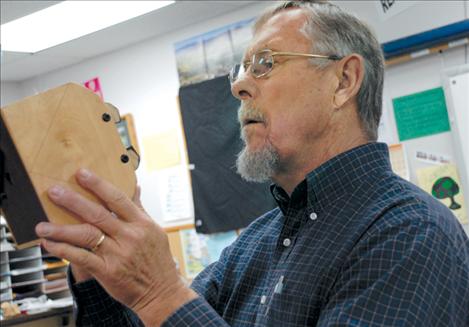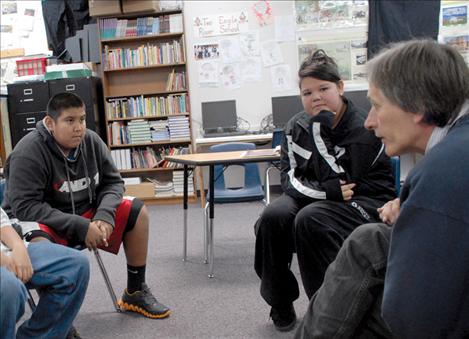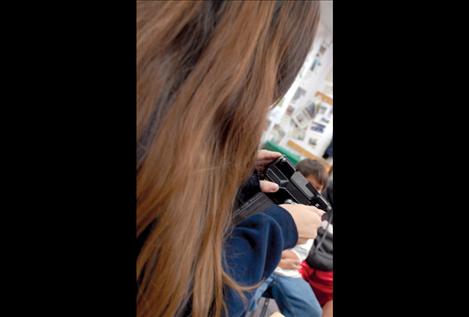Local photographer, students win grant
Hey savvy news reader! Thanks for choosing local.
You are now reading
1 of 3 free articles.
PABLO — Black cloth cloaks the windows; the lights are off; and a rectangle of black paper covers the door. A large adjustable lens affixed to the window controls the light entering the room. Photographer and educator David J. Spear has turned the eighth-grade classroom at Two Eagle River School into a camera obscura, which Leonardo DaVinci invented in the 1600s.
A camera obscura, sort of a whole-room camera, uses a darkened room to receive an image through a small opening or lens in natural color onto a surface, in this case a flat screen, facing the lens. The image is captured on the screen instead of with film or a plate.
Spear, who also teaches a photography class each day at the high school, was beginning photography classes with the eighth graders and teaches a photography class each day at the high school.
The eighth graders are enthusiastic, especially when Spear has them unpack a bag full of cameras, such as a pinhole camera, a view camera complete with gussets, a double lens camera and a modern camera.
Discussing a photo taken with the pinhole camera, Spear asked student Seth Dust how the photo could be made lighter.
“A longer exposure,” Dust said, interested and paying attention to Spear’s information.
The eighth graders already enjoy the class according to their teacher, Allen Bone. They look forward to Spear’s arrival and like the hands-on way he teaches.
“I just want to take pictures,” one student admits.
Spear and the TERS students recently won a prestigious grant, the 2012 Howard Chapnik grant from the W. Eugene Smith Memorial Fund for “Our Community Record,” to help students document culture and history.
The awards honor Smith, a famous humitarian photographer, and Chapnik, former president of “Black Star” pictures and author, by providing money for other photographers.
Although Spear couldn’t afford the trip to New York City to accept the award, he said “My voice and the students’ images were there.”
Beginning his 11th year at TERS, Spear developed “Our Community Record” 10 years ago. The project encourages students to explore and document their community, culture and history through storytelling and photographic studies, according to a press release. The $5,000 grant will be used to produce a monograph, a photographic book of student images taken during the last 10 years. The archive of their photos will eventually become a part of the Confederated Salish and Kootenai Tribal Preservation Department for future generations to use.
“One reason I applied for the grant,” Spear said, “was this 10-year archive of student work.”
The Eugene Smith awards usually go to documentaries, Spear said, although he considers this collection a sort of documentary.
Another reason the project was selected, Spear thinks, was because the quality of work is very good.
Marcel Saba, President of Redux Pictures, LLC., president of the board of trustees for the W. Eugene Smith Memorial Award, and one of the judges for the Howard Chapnik Grant, agreed with Spear.
“What I find absolutely astonishing is the level of photography we continue to see year after year” Saba said. “... The works of Mr. van Agtmael, Mr. Berruti, Mr. Spear and his students exemplify the power of photography and how it can foster change when needed, and build communications bridges between generations of people.”
Spear insists on strong photographs, stressing good composition, balance, use of light, knowledge of how to use a camera and darkroom skills.
He writes and applies for grants to pay for programs and supplies so the school doesn’t have to provide them. In return, Spear expects a commitment by the students to give something back, to give photography their best effort. And they do.
“Each time I see a young person make a photograph that they know is unique because only they could have made that picture, anything about my career or my objectives become irrelevant because when their light comes on in this process we are equals; we are photographers sharing our vision,” Spear said in his statement of working philosophy and career objectives for the Howard Chapnik Grant.















